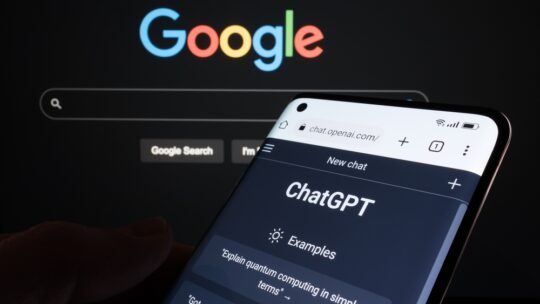
Here’s how content marketing used to work: Create great content for your website, and you would attract the attention of potential customers. But with artificial intelligence (AI) rewriting the rules, what happens when this basic principle no longer applies? That’s when you throw out the playbook, again, and adopt a new content marketing strategy that won’t have you competing with AI but rather, working with it.
But first, let’s talk about what’s changed.
Drowned Out in the Flood of AI-Generated Content
Since the ChatGPT boom began, low-quality, AI-generated content has started to flood search results. AI tools make it easy to build large websites that can compete with more established sites, with estimates suggesting that AI-generated content accounts for up to 18 percent of the top 20 Google results.
AI chatbots have also been known to sometimes feed users out-of-date information about brands or don’t mention them at all, despite being relevant to the query. These are big problems for marketers reliant on web traffic to guide potential customers into their sales funnel, and for consumers who are looking for legitimate sites with good-quality content.
To thrive in the AI era, teams are having luck employing several best practices:
1. Let People Know Your Content Is Created by Humans
Recent research indicates consumer attitudes toward AI-generated content are complicated. Fifty percent of consumers can spot AI generated content, and nearly two-thirds prefer a reveal that content is AI-generated disclosed. On the flip side, brands who state that content is generated by humans may see a boost in trust and brand loyalty, allowing their target audience to feel a genuine connection with their brand voice and values. Human-generated content can provide unique perspectives, charm and humor that chatbots are not yet capable of. This is also an opportunity for teams to focus on quality of content over quantity, and create material that addresses the needs of their customers and actually helps them learn.
2. Be Prepared for Audiences to Seek Information in New Ways
While some people are turning to AI chatbots to find answers, others are searching on social channels. HubSpot research found that a quarter of consumers are ditching traditional search engines in favor of searching for brands on social, and 22% report doing so more frequently.
For brands, this could mean a drop in organic traffic and leads, at least from search engines. A good hedge against this is to beef up following and engagement on social, making it easier for users to find content through other channels.
3. Develop Strategies to Optimize Your Content for AI Chatbots
It’s becoming more and more important to optimize your content for services like ChatGPT. This can be challenging since the way the tool gathers information is not entirely transparent, but what we’ve seen work so far are tactics such as regularly publishing press releases (an old-school technique that works surprisingly well in this modern paradigm) to ensure up-to-date, accurate information about your brand is widely available online. It’s also a great time to keep your company blog and social channels fueled with plenty of good quality, authoritative content.
Generative AI will continue to transform the way that marketers and communicators work. By staying on top of evolving tactics and trends, you can utilize this technology to your team’s advantage, ensuring your content remains relevant and valuable in the changing digital space.
Alexandra Bjertnaes is Chief Strategy Officer at Meltwater.



